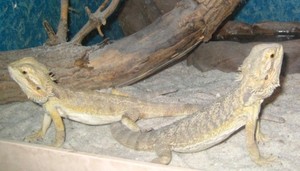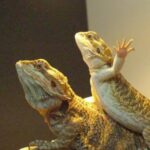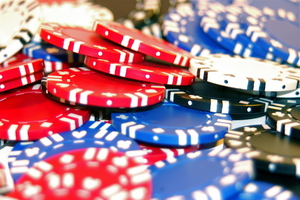General Information
Bearded Dragons, or “Beardies” as they are affectionately called, are one of the newer pets in the pet industry. They originally come from the hot inland deserts of Australia, but are often bred in captivity for resale. They live for up to 10 years, and although often purchased as cute tiny youngsters, they will grow to 22 inches in total length.
Purchasing a Bearding Dragon
Like all pets, it is best to purchase your Beardie from a private breeder rather than from a store. Reputable breeders will typically provide you with more genuine information because they are not just motivated by making a sale, they really care about the animals well being and want to stand behind their reputation as a quality breeder. Their animals will usually be less stressed because they have not gone through a middle man. You must be cautioned though, if you ever find animals in poor condition, do not buy them, not only may you end up with a sick pet, but you are rewarding that person for keeping their animals in poor condition. You can find breeders at local Reptile shows.
Bearded Dragons are about 4 inches, 10 centimeters, long when hatched, they should be no younger than six weeks old when you purchase them. It might seem cute to take a younger one, but this is extremely risky as they often go off their food when stressed, and a move will stress them out. At six weeks they are capable of adjusting quicker and surviving a few days without eating. Have your reptiles’ tank set up and working well before you get your pet. Never buy one on a whim.
Housing
Having a proper enclosure, with the ideal conditions, is the key to keeping your pet well and alive. The proper term for an enclosure for a reptile is called a “Vivarium”. Bearded Dragons need desert vivariums, hot and dry. When young, a smaller tank is fine, about 36 inches long. When full grown they will need a vivarium that is at least 48 inches long, ideally 72 inches. It should be at least 18 inches tall, ideally more, while they are land animals, they do enjoy some climbing.
Set it up so you have a heat source at one end of the tank, the temperature should be about 98 -102 degrees Fahrenheit. This heat source should be in the form of a heat lamp, to create a basking area. You can additionally provide them with a heated rock. Without proper heat, they will not be able to digest their food, so this is critical. The heat source needs to be protected behind a wire mesh, not just a lamp hanging in the cage.
As a desert animal they need a desert substrate, or flooring, this is usually a dust free silica based product, one made for use with reptiles. Do not put any other type of sand in the tank that was not prepared for them. You could make your pet very ill if it ingests some. The sand should not be too deep or it allows their food to hide in. Also you will need to provide your pet with some rocks, and branches, again make sure the branches are reptile safe. You can buy rocks, or find your own as long as you wash them well. Rocks are important as they allow the Beardie to wear his or her toe nails down naturally. Make sure you have provided a hiding spot and water dish. The water source should be centrally located, not right under the heat lamp, and checked daily. The water should be distilled for at least 24 hours, meaning you pour it from your tap and let it sit for 24 hours before putting in in the water bowl.
You will want a UV-B lamp for your tank, this should be on for 12-14 hours a day.
Feeding and Care
Bearded Dragons will eat both insects, and greens. They should be fed crickets of appropriate size. Too big and they will be a choking hazard, as a general rule the insects should be no longer than the distance between your Beardies eyes. If you do not use pesticides in your home and yard, you may also catch and feed them houseflies and grasshoppers. You can also buy meal worms for them. When feeding live food, it is best to offer it in the morning.
As for the greens, this can be kale, romaine lettuce, spinach, and even dandelion greens, as long as you have not treated them with chemicals. They like shredded carrots, pea pods, and most vegetables, but should not be fed onions or potatoes. I prefer to feed greens from my garden as I do not use any chemicals so I know the food is safe. You can buy commercially prepared foods, in pellet form, as well.
Beardies are happy in groups, but it is best not to have more than one male if you have females. Again this is a good reason to buy from a reputable seller who can sex the animals for you.
General Information
As I mentioned before they need large vivariums when full grown, if you cannot provide the size of enclosure needed for a mature animal perhaps a Beardie is not the right pet for you.
Many people get them when they are small, young, and cute, and soon regret it six months later. Spent a lot of time researching them before you commit.
A smaller alternative would be an Anole or Gecko.






